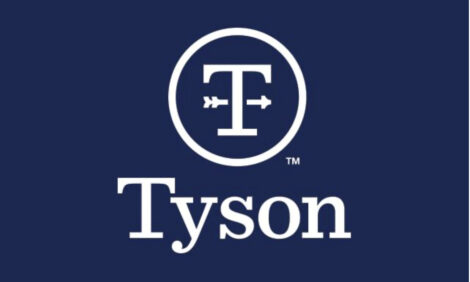



Market Preview: Market Slippage No Surprise
US - Weekly U.S. Market Preview w/e 17th November, provided by Steve R. Meyer, Ph.D., Paragon Economics, Inc.This week's cash hog market is somewhat of a head-scratcher. Not that I didn't expect lower prices. Anyone who has been around the hog business for long expects lower cash prices come late November.
The usual culprit this time of year is a declining cutout value. The push for Thanksgiving hams is well behind us and any momentum left from preparations for Christmas ham sales is waning quickly. The seasonal strength of those grilling cuts is definitely past and there are no more fresh tomatoes to maintain much strength in the belly (bacon) market, even though that is not as big a seasonal factor as it once was.
But cutout values have been relatively stable for the past few weeks (see Figure 1) and have actually risen this week. That is certainly a good sign for pork producers given the fact that boneless/skinless chicken breasts, a major competitor for loins at the retail level, are back below $1/lb. again.

In addition, slaughter rates are not reflecting a huge flood of hogs. Sure, daily slaughter runs of roughly 420,000 head are astounding from a historical perspective, but the U.S. slaughter sector has shown that it can handle those kind of numbers with relative ease, provided there is a margin to be earned.
My estimates show that packer margins have been about normal through the week that ended Nov. 4, the last week for which by-product value data are currently available (see Figure 2). I suspect that we will see margins grow when data for this week is published, but that should surprise no one. Packers' highest margins almost always occur in late November or early December.

What I suspect is happening is this: A good number of producers are now feeding expensive corn to hogs. Even those who planned ahead may well have missed the lower-priced corn of August when they were quite logically waiting for harvest lows that never happened. High-cost corn means high-cost feed and a strong incentive to move hogs to slaughter. Average carcass weights last week were 3 lb. lighter than one year ago.
Even though slaughter levels are close to those predicted by the September pig report, I think they are really a function of an awareness by packers that hogs are moving to slaughter earlier and that any run-up in slaughter could cause real shortages later on. The logical reaction is to take advantage of producers pushing hogs by keeping slaughter levels near expected levels and increasing margins by simply bidding lower for the pigs.
Don't Panic
Chicago Mercantile Exchange (CME) Lean Hog futures have fallen largely due to cash price weakness at the same time that commodity funds (most notably the Goldman-Sachs fund) were rolling out of long December positions. Put the two together and you have a significant break in futures prices.
If you missed selling on the contract life highs last week, don't panic. Cash markets and the front month heavily influence futures prices. If we are, in fact, selling hogs earlier than normal due to high feed prices, it will catch up to this market at some point and give some support to cash prices. Chicken producers are working hard to reduce supplies as well, and any support they can give to breast prices will be positive.
I expect some recovery in the futures markets and would urge producers to take some price protection on rallies. Again, selling into a rally is almost always a good move provided the actual price represents a profit!









